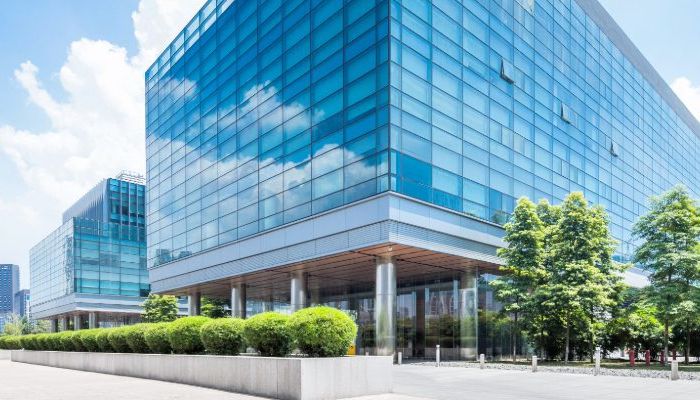Even though some surveys have found that nearly 80 percent of employees prefer to work at home at least one day a week, managers are still undecided on whether remote workers are as productive as those in the office. Given a potential economic downturn, there’s a growing sentiment that employers could pull people more permanently back into their offices despite a tight job market that sees the number of openings exceeding the pool of available workers by 5.6 million in March.
We discuss the impact this could have on organizations with our very own Brian Haines, Chief Strategy Officer of FM:Systems, and Kurt von Koch, CEO of FM:Systems, and how they see the workforce changing in response to a sluggish economy.
Rethinking the Hybrid World of Work
“Current hybrid and flexible work arrangements will reach an equilibrium despite the economic conditions. Some people who prefer to complete certain job functions in-person, like collaborating on projects, brainstorming new ideas, and solving a set of problems with their co-workers, will inevitably go into the office more often,” said Brian.
Of course, this will be dependent on the role. For example, developers are returning to the office while people in sales roles, who are often on the phone or seeing clients, are not.
“In the future, hybrid will not necessarily mean spending less time in the office. Instead, hybrid will center more on getting value from the in-office experiences to be had,” he added.
For Kurt, an economic downturn will dramatically accelerate a move towards getting people back to the office.
“Given the generationally low unemployment percentages, some employers have uncomfortably adopted hybrid and flexible work arrangements as an incentive to entice people to join the organization or to remain with it. In an economic decline where unemployment increases, we will see these employers push back on the flexibility that has recently become the norm for the majority,” said Kurt.
However, he believes a transition back to working in the office full-time would be a big mistake.
“Where possible, flexibility is more equitable and more productive. It must be combined with the purposeful and practical coming together of people to encourage connection, culture building, and problem-solving that can only come from sharing a meal or bumping into one another in the corridor.”
Making it Real
In their experience, coworkers are more effective and productive in a hybrid approach. Kurt recognizes that since the company embraced a hybrid work arrangement, “the team is now splitting commuting time in half, and this extra time has been shifted toward getting more work done, or even toward spending additional personal and family time. Of course, there’s the reality of missing out on casual interaction in the hallway and that quick pop-in conversation that Teams and Zoom can’t replicate, but the way people are using this extra time has been a win-win for employees’ health and well-being and overall output. It gives them a lot more agency in how they can use this extra time.”
For Brian, in the absence of mandates, people will self-organize the way they want to work based on how best they perform.
“At FM:Systems, we started doing an optional ‘Work from Office Wednesdays.’ We’ll provide lunch, and we can collaborate, and see old friends. Fridays used to be a popular day for gathering and socializing pre-pandemic, but are now one of the most quiet days in-office. When people come into the office, it’s usually not to be sitting at a desk on calls all day not interacting with anyone else. They’re coming in to socialize, and work on things together. So, something as simple as providing lunch for people to enjoy together on a day when most are in the office anyway, works well for us; and I think is going to become more commonplace across the board.”
Deb Hill, VP of Human Resources at FM:Systems, echoed this sentiment and highlighted another initiative the organization has implemented to manage this ‘new’ way of working.
“One of the really small things we’ve done is rolled out a 15-minute virtual meeting every other week with the sole purpose of building better connections across the organization. It’s called ‘Take 15’. These biweekly guided social connection opportunities feature a variety of segments from learning sessions to team games like ‘Name That Tune’ or ‘Just Trivia.’ Most of these sessions utilize the breakout room feature in Teams for varied and more intimate social connections. As employees participate and tell others across the business, we’re seeing our participation rate is increasing every week,” said Deb.
Keeping it Focused
She said that if hybrid work is to have any chance of succeeding, leaders need to be intentional about connecting. This must be done both one-on-one with individual team members as well as by pulling others across the organization into connections opportunities.
“Another effective way to help workers feel more connected is to use the workplace as a place to bring your own team together for team building activities. Involve other teams as well as your HR business partner. Leaders should be creative in building a trusted relationship with their direct reports.”
Perhaps, more crucially, people feel less connected in the office environment because the workspace hasn’t changed or been updated for hybrid work, especially prioritizing ideation and creation.
“This can make it feel lonely to be working onsite, stuck in an office or cubicle while still on video calls all day. To offset this, leaders should shift the purpose of onsite work. For instance, if it becomes about ideation, creation, and collaboration, there’s an inherent feeling of connection that goes along with this work,” said Deb.
Moving Forward
However, some companies have already made the call for employees to return to the office. Most recently, Elon Musk told full-time employees they needed to return to the office, or they would be let go. But Kurt believes that the office approach makes sense in the case of Tesla.
“While it makes sense for some organizations to have employees in the office more than others, you have to create a strategy that works best for the company’s mission while also creating an ideal workplace experience for your employees.”
Regardless, Brian feels that the way organizations use their office space has changed irrevocably. There’s no turning back!
“I don’t think it’s the death of offices. The purpose and function of offices will continue to change and evolve whether there’s an economic downturn or not. But it certainly is the death of what the office used to be about.”










